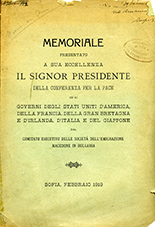
We kindly inform you that, as long as the subject affiliation of our 300.000+ articles is in progress, you might get unsufficient or no results on your third level or second level search. In this case, please broaden your search criteria.

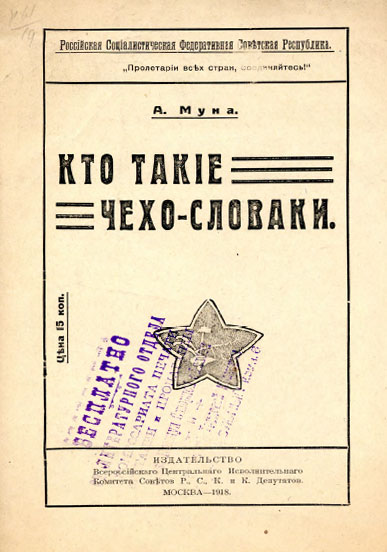
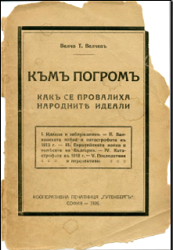
Ideals and delusions. Balkan War and catastrophe of 1913. The Great European war and involvement of Bulgaria. The 1918 catastrophe, its consequences for Bulgaria and the prospects. Published in 1926 by »Кооперативна печатница Гутенбергъ,«
More...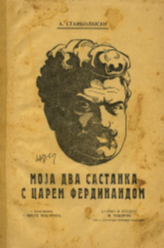
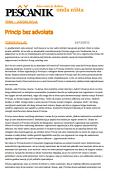
U „građanskom ratu sećanja” ovih dana je na nov način oživljen Sarajevski atentat. Okvir je ostao tanato-politički, ali se više ne eksploatiše samožrtvovanje Principa nego smrt Ferdinanda. Ko je odgovoran za to što su mladobosanci od tiranoubica postali teroristi? Svi oni u regionu koji strepe od jugoslovenstva i svi oni iz okruženja koji žele da rasterete vlastite nacije od imperijalističke odgovornosti za klanicu Prvog svetskog rata. Da li će oni uveriti javnost da su atentatori bili teroristi? Verovatno hoće zato što Princip danas nema valjanog advokata. Srušene su one strukture koje su Principa iznedrile i koje su ga docnije opravdano heroizovale. Država Jugoslavija je Principu s razlogom dizala spomenike i po njemu imenovala ulice. Danas nikakva kohorta blistavih istoričara ne može odbraniti Principa zato što nema južnoslovenske države kao ostvarenja mutnog ideala koji je vodio mladobosance. A što se rečena država danas više shvata kao iluzija ili kao tamnica to su veće šanse da Princip o neslavnom jubileju bude stigmatizovan kao terorista.
More...
Iz zbornika „Svakodnevica i društveni odgovori na epidemijske krize 1914-2020“, nastalog u okviru naučno-istraživačkog projekta „Čovek i društvo u vremenu krize“, urednik zbornika Milan Ristović, izdavač Filozofski fakultet Univerziteta u Beogradu 2021. U članku se prikazuje život Beograđana krajem 1918. U danima slavlja zbog oslobođenja, stvaranja Jugoslavije i povratka u normalni život, stanovnike je kosio Španski grip. U članku se prikazuju razlozi zbog kojih je pandemija prošla gotovo neopaženo, uprkos visokoj smrtnosti.
More...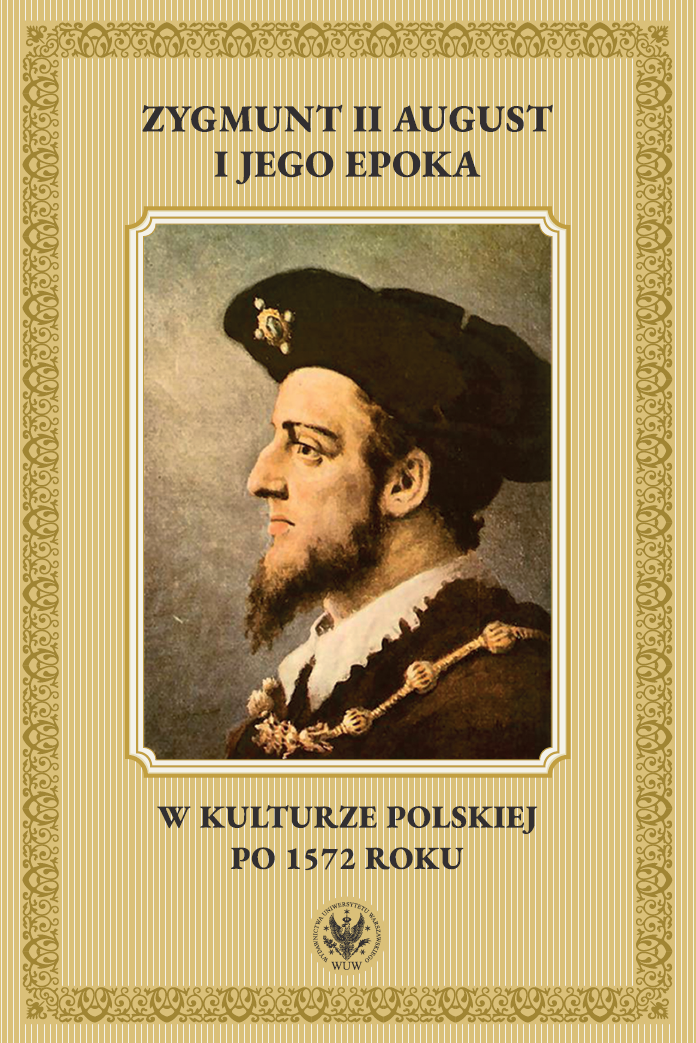
In the 16th century, the death of a ruler was not only a historical fact and a political event, but it also resonated in literature and art. After the death of Sigismund Augustus, however, not many artistic works were created. Among the literary testimonies, a large part are Latin works. The article discusses first the tombstone inscription and the plaques from the sarcophagus and the coffin, then Andrzej Trzecieski’s works written after the king’s death, and finally, it focuses on Latin poems included in the volume In funere Sigismundi Augusti regis Poloniae celebrato Neapoli [...] oratio atque praestantium virorum poemata [1576]. The analysis of the aforementioned texts allowed to distinguish common features of funeral Latin poetry and Renaissance humanistic biography.
More...
The article is an attempt to answer the question raised in the title. Its starting point is the marginal note in the autobiography of Maciej Stryjkowski. Enumerating his early works, the chronicler mentioned writing poems commemorating the last Jagiellonian. He called the poems “the threnodies about the death of the king Sigismund Augustus”. Contemporary bibliographies consider the work lost or question truthfulness of Stryjkowski’s declaration. The author of the article reconstructs the history of the unknown funeralium, using methods of philological and typographic analysis, assesses literary competences of the poet and points to the large fragment of his other work as a relic of the lost “Threnodies”. The almost 100-verse fragment of Goniec Cnoty has been juxtaposed with its historical-literary background. It consists of the epitaph for the hetman Chodkiewicz, written by Stryjkowski shortly after 1572, and native poems commemorating the last Jagiellonian dynasts. That work differs definitely from the 16th century Latin humanistic poetry, based on ancient genres and content themes. Specific characteristics of Polish commemorative poems can be indicated in the part of Goniec Cnoty dedicated to Sigismund Augustus, in which the king’s biography intertwines with praise of his achievements, prayer and thought of impermanent greatness of the Earth’s powers. The conclusion of the article contains a thesis identifying that fragment as the remnant of a today unknown Stryjkowski’s funeral work.
More...
The Radziwiłłs from Birże commemorated their relative Barbara and her second husband, the king Sigismund II Augustus in the 17th century. The paper discusses literary works from that time that both referred to this marriage and emphasized the honour of the whole Lithuanian family closely related to the Jagiellonian dynasty resulting from this relationship. Walerian Gorzycki, Filip Bajewski, Samuel Dowgird from Pogowie were the authors who mentioned Barbara Radziwiłł in their laudatory verses devoted to the prince Krzysztof Radziwiłł and his son Janusz. Salomon Rysiński wrote an entire chapter about her, which was published in his biographical book concerning the Radziwiłłs. Moreover, the queen was mentioned in Augustyn Wituński’s sermon delivered at the funeral of Katarzyna, the first wife of Janusz Radziwiłł. In the dedication to "The Gdańsk Bible" [pol. "Biblia gdańska"], the prince Krzysztof Radziwiłł, a patron of Protestants in Lithuania and the author of that introductory text, described his ancestor who offered the earlier translation of the Bible to the king Sigismund II Augustus. Furthermore, at the end of the 17th century the author of "The Life of Bogusław Radziwiłł" [pol. "Żywot [...] Bogusława Radziwiłła"] wrote briefly about close ties of some of the Radziwiłłs – Mikołaj Czarny and Mikołaj Rudy – with the royal court. All these laudatory and epistolary writings portray the king and his wife very favourably as their authors tried to prove the importance of the Radziwiłłs and to counteract a black legend of the most infamous daughter of this family.
More...
The aim of the study is to reconstruct the image of the reign of Sigismund Augustus in Polish literature from the second half of the 16th century to the end of the first half of the 17th century. The viewing includes works representing various genres: epigram, chronicle, life, biography, sermon, apology, epic, and formally diverse occasional poetry. It is not, however, about capturing the relationship between the genre and the image of the ruler, but about the process of forming an opinion about the king’s times and achievements, as well as his personal life. The subject of the discussion are works by, among others, Mikołaj Rej, Krzysztof Warszewicki, Łukasz Górnicki, Stanisław Grochowski, Krzysztof Okuń, Joachim Bielski, Aleksander Gwagnin, Marcin Paszkowski, Andrzej Zbylitowski, Samuel Twardowski, Jan Bielski. The times of Sigismund Augustus began to be identified with the golden age, because there was peace in the Crown, the army leaders demonstrated their effectiveness on the battlefields, the conclusion of a union between the Crown and Lithuania, and the introduction of modern system solutions were appreciated. The king was rebuked for his dissolute life, lack of male heir, and indecisiveness.
More...
The tragedy Zygmunt August (Sigismund Augustus), written at the turn of 1779 and 1780, was the playwriting debut of Józef Wybicki. In accordance with the Enlightenment tendencies, the author inscribed it in the trend of instructive modernization of national history, at the same time offering a critical analysis of the country’s weakness, and exposing the role that King Sigismund II Augustus played in it. The action of the piece focuses on the dispute between the ruler and the Sejm over the recognition of his marriage with Barbara Radziwiłłówna. The anti-royal opposition, led by Piotr Kmita, accused the king of tyranny, lack of respect for freedom and Catholic faith, and, eventually, took up arms. In this conflict, Wybicki pictures the monarch as full of Enlightenment ideals. This is not, however, an image of the real Sigismund II Augustus, but of the kind of a king the author would like to see. It is rather a figure, in which all virtues are concentrated: graciousness, goodness, wisdom, fortitude, justice, fidelity, tolerance, etc. The ruler does not embody the qualities of his enemies, such as: pride, greed, jealousy, betrayal, fanaticism. King Sigismund II Augustus, subjected here to Wybicki’s dramatic imagination, is thus mythologized.
More...
The article is an attempt at reading "Śpiewy historyczne" ("Historical Songs") by Julian Ursyn Niemcewicz (1816), focused on reading basic historical meanings designed for this cycle by the Warsaw Society of Friends of Learning. Disputing the dominant view on the role of pre-romantic historiosophy in shaping the meaning of the cycle, the author presents three issues. Firstly, Historical Songs is a highly diversified structure; the book consists of 33 lyrical pieces interspersed with historical commentaries in prose. In these historical additions Niemcewicz reveals himself as well-read in the oldest medieval, Renaissance and Enlightenment sources. Above all, he takes great care in using them in a sense consistent with the views of the post-partition heirs of the historical thought of the time of Stanisław August (King of Poland 1764–1795). This observation definitely diminishes the dominant role of the alleged Romantic thought and historiosophy of the 19th century. This is followed by the poem Zygmunt August and Niemcewicz’s commentary. This work – inspired probably by a poem by Jan Kochanowski – has a special place in the cycle. It updates issues close to the Renaissance poet, and at the same time refers to the main problems of Polish historiography emerging in the second half of the 18th century, especially under the influence of Adam Naruszewicz’s The History of the Polish Nation. This judgment is reinforced by reading the historical prose study in Niemcewicz’s "Historical Songs". At the end of the author attempts to present the collection as a component of the Enlightenment historical criticism, inspired mainly by printed sources, and less so by the thinking dominated by the 19th century philosophy of history.
More...![„[…] a oto ginie marnie, pamięci nawet po sobie nie zostawując, na jaką zasłużył”](/api/image/getbookcoverimage?id=document_cover-page-image_1232894.png)
The text is dedicated to the character of the king Sigismund II Augustus in Józef Ignacy Kraszewski’s novels: "Mistrz Twardowski" ("Mister Twardowski", 1840), "Zygmuntowskie czasy" ("Sigismund’s Times", 1846), "Dwie królowe" ("Two Queens", 1884) and "Infantka" ("Infant Princess", 1884). It also refers to the portrayal of this monarch in "Wizerunki książąt i królów polskich" ("Portrayals of Polish Princes and Kings", 1888), written by the same author. The writer’s vision, sometimes contradicting historic sources, consists of portraying the king as a sentimental-romantic lover type. The evolution of the author’s attitude towards the last ruler from the Jagiellonian dynasty is shown by his ceasing to accept this kind of character type and eventually beginning to criticize it as a threat to his “manliness”. According to the writer, the lack of the latter trait make it impossible for Sigismund II Augustus to be a good monarch, which is why his achievements are undervalued in Kraszewski’s novels.
More...
Jan Matejko (1838–1893) is the author of more than three hundred twenty oil paintings, several thousand drawing sketches, a couple of hundred projects of the polychrome, stained glass, altars, and statues. He was a collector. He was a titan, not only artistic. His paintings received the highest awards. Also, honorary memberships of the European artistic associations were bestowed on him. In 1873 Matejko became the director of Cracow Fine Arts School. The artist conducted an inventory of historical places, creating an extraordinary pictorial documentation of often no longer existing objects. He acquired artifacts related to historical figures for his own collection. His painting talent and historical passion developed in parallel. From the beginning of his artistic journey, he embarked on pilgrimages to churches, libraries, monasteries, and through the streets of cities. He filled the pages of the album "Skarbczyk". He copied, drew, documented. The important fact is that since 1856, Matejko had a permanent right to access the valuable manuscript collections of the Jagiellonian Library, and from 1864 he was a member of the Cracow Scientific Society. Matejko’ s private library proves his extensive interests. He read about art, philosophy, and history. His collection included: Marcin Bielski’ s "Polish Chronicle", works by Jan Długosz, "Historical annals", "Cracow annals", "The Templates of Medieval and Renaissance Art after the End of the Seventeenth Century in Old Poland" ("Wzory sztuki średniowiecznej i z epoki Odrodzenia po koniec wieku XVII w dawnej Polsce") by Edward Rastawiecki and Aleksander Przezdziecki, as well as many other works in the field of history, philosophy, ethnography, given to him by the authors. He actively took part in the work of the Department of Archaeology and Fine Arts of the Scientific Society. Matejko depicted events related to the figure of Sigismund II Augustus in his works, covering various periods of his life as the heir to the throne and later as the king. He created portrait sketches, compositional sketches for paintings, historical paintings, and immortalized him in the work "Polish Clothing 1200–1795" ("Ubiory w Polsce 1200–1795"). The artist collected artifacts related to the Jagiellonian era.
More...
In the political and social circumstances of the partitions, when throughout the 19th century and until 1918, efforts were made to consolidate Polish national identity, interest in Old Polish literature and culture, and especially in the Sigismund times as the “golden age” of the Republic, did not wane. In the historiography, literature and art of the time, in numerous publications in books and periodicals, one can observe a focus on the person of King Sigismund II Augustus. A kind of summation of nineteenth-century knowledge and perceptions of him are the dramatic works, of which the king is the protagonist and which saw the light of day in print and on theatrical stages in the early twentieth century. The most outstanding of these is the unfinished, posthumously reconstructed work Zygmunt August by Stanisław Wyspiański, which seems to be an attempt to synthesize many images of the hero, taken from various sources (lover, husband, son, promoter of Renaissance culture, defender of the Polish language, ruler of the Republic). The text of the drama and the surviving documents confirm that Wyspiański made use of numerous 19th-century publications related to the Sigismund theme, which at the same time provided the context for the reception of his drama by his contemporaries: literary and visual art works, source editions, scientific and popular historical and cultural studies; some of Wyspiański’s reading can be guessed at from their time and place of publication and popularity in the era. In this article, Wyspianski’s history of Sigismund Augustus provides a starting point for observing the 19th-century reception of the figure of the last Jagiellonian, as revealed by the facts from the history of the publishing movement, which are certain or probable sources of Wyspiański’s erudition and artistic inspiration, as well as an appropriate context for analyzing and interpreting his work.
More...
In Polish film production of the interwar years, historical films were scarce. The main reason constituted very high cost of costumes and sets, which, with the notorious lack of funds in our film industry, was a great handicap. Despite these problems, several worthwhile historical films were created. All of them told the history of Poland or were set in Poland of the past eras. We did not produce films set in other parts of the world. The earliest era which our filmmakers reached was the reign of King Sigismund Augustus. The first of these films set in this era was "Pan Twardowski" (dir. Henryk Szaro, 1936) – a screen adaptation of the Polish legend about the Cracow sorcerer. One of the film’s scenes featured Sigismund Augustus. The second is "Barbara Radziwiłłówna" (dir. Józef Lejtes, 1936) – the story of a love affair and a secret wedding between the king and a Vilnius magnate lady. Both were shot with great panache, and both were praised by reviewers, although there was no shortage of criticism regarding the historical fidelity of certain elements, costumes as one example. Another cinematic era was the time of the Swedish invasion of Poland, the so-called Swedish Deluge between 1655–1660, and the heroic defense of the Jasna Góra monastery (Polish sacred place) shown in the film "Prior Kordecki – defender of Częstochowa” (dir. Edward Puchalski, 1934). Two films told the story of Tadeusz Kościuszko – the Polish hero and leader of the uprising in 1794. These were "Kościuszko’s First Love" (dir. Jerzy Orthon, 1929) and "Kościuszko at Racławice" (dir. Józef Lejtes, 1938). Unfortunately, both were not successful. Another six films were set in the 19th century. The output of historical cinema of the interwar years is not very numerous. Many of them were accused of being inconsistent with reality or lacked attention to detail, which, given the very difficult situation of our cinematographic industry and the specific requirements of the market, should not be surprising. Despite the adversity, several films of great value were made, and some of them, such as "Barbara Radziwiłłówna" by Józef Lejtes, have permanently entered the canon of the Polish cinema.
More...
Paweł Jasienica was one of the most significant personalities of Polish culture at the time when the foundations of the future institutional opposition were slowly beginning to form. His authority was established not only by his biography, but also by the popularity of his works, which aroused a lively reading response and fierce polemics among professional historians. Jasienica’s books, along with their methodological subsoil, became the subject of heated discussions, which did not prevent the recipients from assessing them at all. In general, even the greatest polemicists were able to admit that the writings of the author of "Polska Jagiellonów" ("Jagiellonian Poland") are characterized by an intellectual passion for which it would be difficult to find competition on the publishing market. Paweł Jasienica considered himself primarily a writer. Intellectual commitment to the recognition and understanding of the heritage of memory was the most important creative impulse for him. For this reason, it would be difficult to situate his essays in the domain of pure popularization. The author of "Rzeczpospolita Obojga Narodów" ("The Commonwealth of Both Nations") went far beyond the area of disseminating the results of scientific research, he saw mature discussion partners in his readers, he did not use erudite concessions. The essay is an analysis and interpretation of the portrait of Sigismund Augustus that emerges from Paweł Jasienica’s works. The king occupies a special place here. The future author of "Myśli o dawnej Polsce" ("Thoughts about Old Poland") did not deal with any other historical figure for so long – the king was the hero of Leon Lech Beynar’s scientific debut. The assessment formed at the beginning of his writing career, coupled with an excellent knowledge of historical sources, underwent only slight re-evaluations over the following years. In the historical considerations of Jasienica Sigismund Augustus gained the status of an exemplary figure of power.
More...
The text concerns the concept of Queen Bona in Janusz Majewski’s series "Królowa Bona" ("Queen Bona") from 1980. This monarch was viewed negatively in the Polish tradition, but the author of the series script, Halina Auderska, attempts to show this character as a woman, mother, politician and strategist. The article discusses the film and theatrical means of expression with which the screen character of Bona Sforza was built.
More...
The article discusses the ways of presenting the figure of King Sigismund I the Old (Zygmunt I Stary) in older and contemporary books for children and youth published after 1945. The authors of historical novels, short stories, adventure-historical works, poems and popular science works wrote about the most important facts from of the king’s life and curiosities about his court (including the character of Bona Sforza) to interest the young reader. Depending on the potential age of the recipient, the form and means of popularizing historical knowledge were adjusted. On the example of the latest publications, it has been proven that they are usually aimed at a younger reader, willingly use elements of adventure and fun. In most of the works discussed, the numerous merits of Sigismund I the Old are emphasized (Prussian tribute, the flourishing of many areas of life in Poland, culture and art, the rise of the state on a European scale, the largest investments), but his lack of decisiveness and dependence on the decisions of his wife are criticized.
More...
The subject of this article is Knyszyn, a town located in Podlasie, whose times of greatest splendor coincide with the reign of Sigismund Augustus. Having a special liking for the natural conditions found there, the Jagiellonian ruler not only visited Knyszyn many times, but also constantly took care of its development, establishing his own farm, a stud farm and, based on the surrounding ponds, a prosperous fish farm. Finally, shortly before his death, he endowed this Lithuanian town with municipal rights. The work discusses the relationship between Sigismund Augustus and Knyszyn in more detail, with special attention paid to, among other things, the royal ponds turned into a Jewish cemetery, the only permanent trace of the monarch’s presence today.
More...